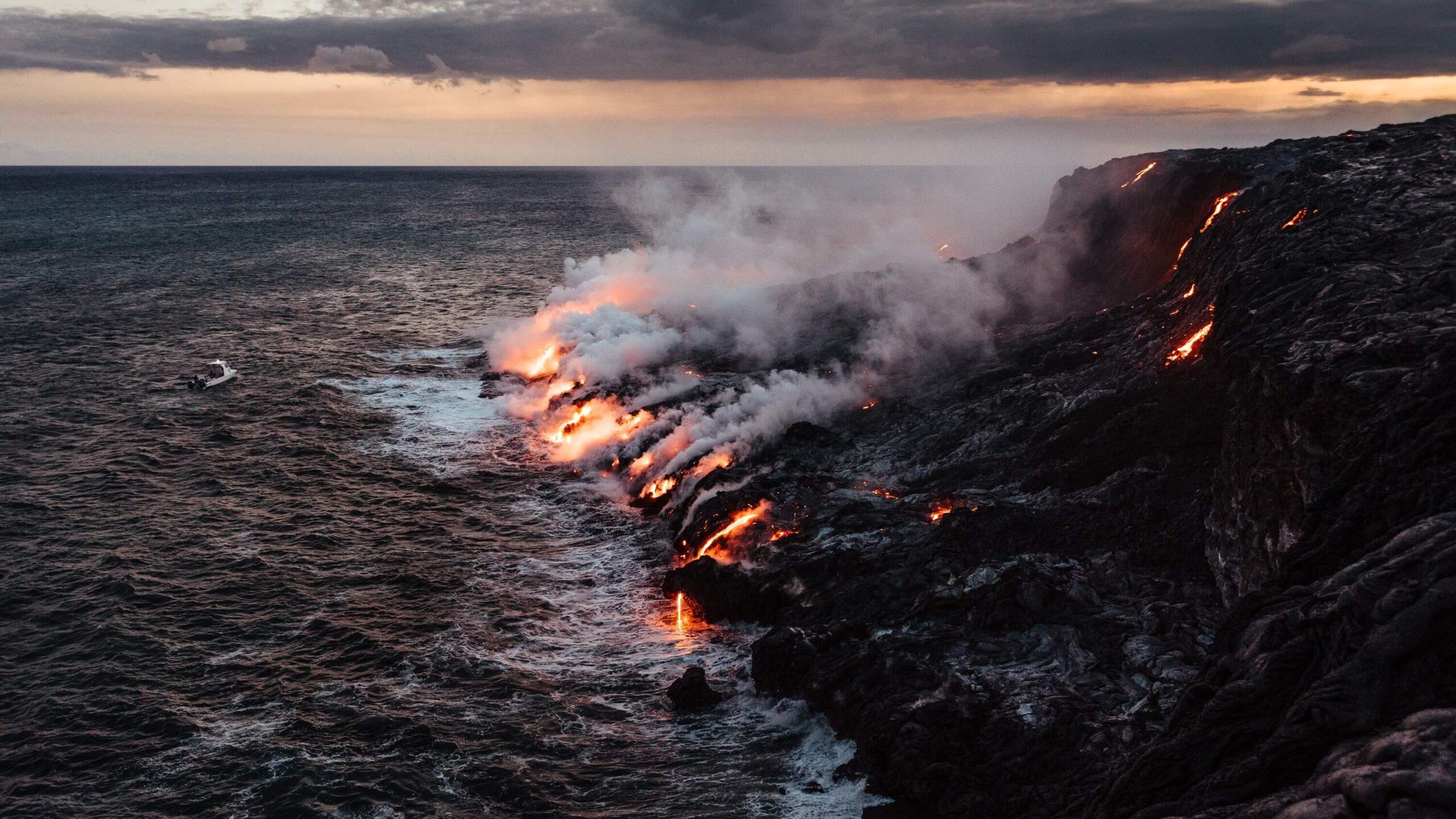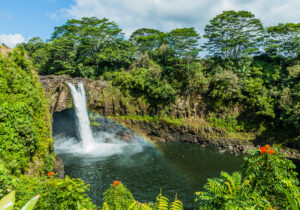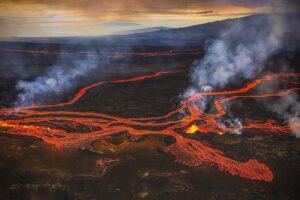Welcome to the captivating world of the Big Island, where the fiery forces of nature have shaped the landscape in the form of majestic volcanoes. In this comprehensive guide, we’ll take you on a journey to discover the awe-inspiring volcanoes that define Hawaii’s largest island.
How many volcanoes are on the Big Island?
The Big Island of Hawaii is home to six major volcanoes. In order from oldest to youngest, these volcanoes are Mahukona, Kohala, Mauna Kea, Hualalai, Mauna Loa, and Kilauea. Each volcano has played a crucial role in shaping the island’s diverse landscapes, and their varying ages contribute to the unique geological features found on the Big Island.
Mahukona
Our exploration begins with Mahukona, the oldest of the six major volcanoes on the Big Island. Though now dormant and buried underwater, Mahukona’s legacy is etched in the island’s geological history.
Nestled on the northwest coast of the Big Island, Mahukona stands as an ancient testament to the island’s geological history. While not as well-known as its counterparts, this dormant volcano exudes tranquility and offers a unique glimpse into Hawaii’s past volcanic activity.
Kohala
Situated on the northern tip of the Big Island, Kohala stands as a testament to the island’s geological legacy. As the second oldest shield volcano, Kohala is draped in lush greenery, offering a timeless beauty that captivates all who visit.
Unlike its more active counterparts, Kohala is a dormant giant, its slopes a canvas painted with the vibrant hues of Hawaii’s diverse flora. The summit caldera, a tranquil centerpiece, invites exploration and reflection on the enduring power of volcanic forces.
Kohala is the second oldest shield volcano. Cloaked in lush greenery, Kohala stands as a testament to the enduring power of volcanic forces.
Mauna Kea
Rising majestically on the Big Island, Mauna Kea is a dormant giant that transcends both earthly and celestial realms. Known as the tallest volcano on the island, its summit pierces the sky at about 13,796 feet (4,205 meters) above sea level. However, when measured from its base below sea level, Mauna Kea stands as the tallest mountain on Earth.
The summit of Mauna Kea is a sacred space, hosting world-class astronomical observatories that peer into the vastness of the cosmos. As you ascend its slopes, the air thins, and the landscape transforms into an otherworldly scene. The barren, rocky terrain is a stark contrast to the tropical paradise below, creating a unique and breathtaking experience for those who venture to its peak.
Mauna Kea holds cultural significance for the Native Hawaiian people, featuring in ancient legends and serving as a connection between Earth and sky. Kailani Tours provides a window into the geological marvels and cultural stories of Mauna Kea, offering a journey that goes beyond the surface of this extraordinary dormant volcano.
Hualalai
Resting on the western side of the Big Island, Hualalai is a dormant volcano that exudes a sense of majesty and history. While currently in a state of dormancy, Hualalai has a storied past of eruptions that has left an indelible mark on its landscape.
The slopes of Hualalai are adorned with diverse flora, creating a lush and picturesque scene. Unlike some of its more active counterparts, Hualalai invites exploration without the imminent threat of volcanic activity. Trails wind through the landscape, offering a closer look at the geological intricacies and the resilience of life that has flourished in the wake of past eruptions.
Mauna Loa – Earth’s Colossal Shield
Dominating the southern landscape of the Big Island, Mauna Loa stands as Earth’s largest shield volcano, covering more than half of the island’s landmass. Despite its colossal size, Mauna Loa exhibits a gentle and welcoming demeanor, with slopes that extend gracefully from its summit to the lower elevations.
Currently dormant, Mauna Loa’s vast expanse provides visitors with panoramic vistas that showcase the island’s volcanic legacy. The landscape is characterized by undulating terrain, volcanic craters, and lava fields—a testament to the volcano’s historical eruptions.
Traversing the slopes of Mauna Loa unveils the geological intricacies that make it a captivating presence. The Mauna Loa Observatory, perched on its flanks, plays a crucial role in monitoring atmospheric conditions.
Kilauea
Situated within Hawaii Volcanoes National Park on the southeastern side of the Big Island, Kilauea is a living testament to the dynamic and ever-changing nature of volcanic forces. Revered as one of the world’s most active volcanoes, Kilauea is under the watchful gaze of Pele, the Hawaiian Goddess of fire.
The summit of Kilauea features the iconic Halema’uma’u Crater and the Pu’u ‘O’o vent, where molten lava continuously reshapes the landscape. Visitors can witness the mesmerizing interplay of lava and the Earth’s crust, creating a surreal and awe-inspiring spectacle.
The geological significance of Kilauea extends beyond its dynamic activity. The surrounding landscape, marked by lava fields and volcanic features, showcases the ongoing process of land formation.
Are there active volcanoes on the Big Island?
Yes, the Big Island of Hawaii is home to active volcanoes, with Kilauea being one of the most notable. Kilauea is considered one of the world’s most active volcanoes and has been erupting continuously since 1983.
It is located within Hawaii Volcanoes National Park, offering visitors the opportunity to witness the dynamic processes of volcanic activity, including lava flows and volcanic landscapes.
While Kilauea is the primary active volcano on the Big Island, it’s essential to note that volcanic activity can change over time. Monitoring and updates from local authorities and the U.S. Geological Survey (USGS) provide valuable information for those planning to explore volcanic areas.
Additionally, Mauna Loa, another prominent volcano on the island, is also considered an active shield volcano, although its last eruption occurred on November 27, 2022.
What is the tallest volcano on the Big Island?
The tallest volcano on the Big Island of Hawaii is Mauna Kea. Mauna Kea stands as the highest point on the island, with its summit reaching an elevation of about 13,796 feet (4,205 meters) above sea level.
While Mauna Loa is Earth’s largest shield volcano in terms of volume, Mauna Kea surpasses it in terms of elevation, making it the highest point among the volcanoes on the Big Island.
Big Island Volcano Tours With Kailani Tours
Explore the wonders of the Big Island’s volcanoes with Kailani Tours. Our expert-guided volcano tours provide a captivating journey through the heart of Hawaiʻi’s geological marvels.
Discover the ancient landscapes, witness the power of Kilauea, and create memories that last a lifetime. Book your Kailani Tours volcano adventure today for an unforgettable experience.
Be Sure To Visit Some Of Hawaii’s Volcanoes During Your Stay!
The Big Island’s volcanoes stand as both guardians and artists, shaping the landscape and providing a unique backdrop for the island’s vibrant culture. Whether you’re a nature enthusiast, a science buff, or simply seeking awe-inspiring vistas, the volcanoes of the Big Island promise an unforgettable experience.
Embark on this journey, immerse yourself in the geological wonders, and let the spirit of Hawaii’s volcanoes leave an indelible mark on your soul.





